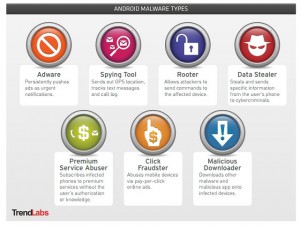According to an infographic published by Go-Gulf.com in 2012, there are over 91.4 million smartphones in the US and that number is expected to balloon up to 252 million by 2016. Smartphones, being the plethora of personal information that they are, have managed to become sizeable targets for computer hackers, becoming more and more attractive as targets as smartphones and their applications become more and more integrated in your everyday life. So how does the average user (with Facebook, banking apps, email and all) protect their information?
Why you shouldn’t jailbreak your iPhone
Questionably legal but generally convenient, jailbreaking your phone allows you to do many things, including accessing apps that aren’t allowed on the Apple or Google marketplaces, uninstalling bloatware (the useless irremovable software that comes pre-installed on your phone) and illegally swapping that $800 phone to a the carrier with the cheapest prices. While those are all tempting reasons to jailbreak a phone, the cons far outweigh the pros. The third party apps available to jailbroken phones do not have to measure up to the same standards as app store or market place applications. A great example is the Australian born ikee worm that infected jailbroken phones that had a Secure Shell(SSH) app installed. While harmless, it would replace your phone background with a picture of Rick Astley but the fact that it could change anything on a phone at all made it a huge security risk. Another issue with jailbreaking your phone was the risk of ‘bricking’ it – meaning that somewhere in the process of tampering with your phone, you corrupted its firmware making the phone unresponsive to touch or button presses. While there is a chance a phone can be fixed, if it can’t be unbricked, you’ll have to shell out for a new one. Last but not least is the all-important warranty issue. If you tamper with your phone it voids your warranty. End of story.
Reading is fundamental. Really.
When you download an app on an android phone you’re given a list of all the permissions that application will need to use after it’s installed. Those permissions can include tracking your location via GPS, reading your phones contact data, editing your personal information (calendar data, etc.) and sending text messages on your behalf. Generally speaking, if an application is asking permission to use thing it shouldn’t require to function properly, you shouldn’t download it. While it’s true that many non-malicious apps ask for extra permissions, there are – an alarming number are. Trend Micro a reputable internet security company made an early claim that there would be at least a million cases of malware in android apps in 2013 and then backed it up by scanning 2 million apps. 1 in 10 of 2 million scanned apps were suspected to be malware.
Add an Antivirus
Hands down, Android phones are the most vulnerable phones on the market. With so many versions of the operating system out, it is difficult to issue patches for security vulnerabilities that pop up and that leaves the job of protecting the phone from viruses to good antivirus software. For the android users: some good apps to look into are AVG Antivirus, Lookout Security, Norton Security Antivirus and Antivirus and Mobile Security by TRUSTGO INC. Non-jailbroken iPhones don’t have to worry about antivirus software as the few loopholes in iOS are fixed quickly and efficiently when found.
Sources
- http://kschang.hubpages.com/hub/Do-Smartphones-Get-Viruses-Why-iPhones-Android-Phones-and-Others-Are-Only-as-Smart-as-Their-Users
- http://www.neowin.net/news/trend-micro-claims-1-in-10-android-apps-are-malware
- http://www.esecurityplanet.com/views/article.php/3890346/iPhone-Security-Apps-Buying-Guide.htm
- http://nakedsecurity.sophos.com/2010/01/11/banking-malware-android-marketplace/
- http://www.intego.com/mac-security-blog/iphone-ransomware-dutch-hacker-exploits-jailbroken-iphone-bug-and-asks-for-money/
- http://www.brighthub.com/mobile/iphone/articles/93890.aspx
- http://amovilcomunicacion.files.wordpress.com/2011/03/smartphones.jpg?w=640






Thank you for this article. It’s good to know that many mobile apps are available for travelers. It’s constructive for us. I would like to thank you for the efforts you made in writing this awesome article.